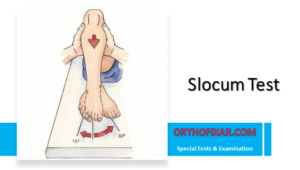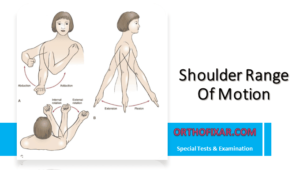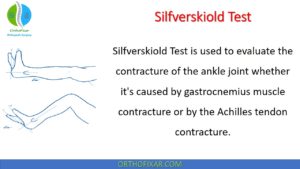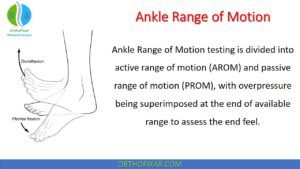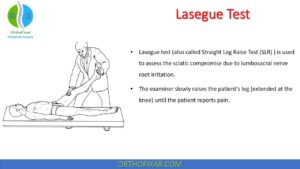Flamingo Test for SI Joint
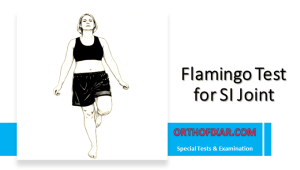
The Flamingo Test is a simple clinical maneuver for assessing stress-related pain at the pubic symphysis and sacroiliac (SI) joints. It leverages the mechanics of single-leg stance to place targeted load on the pelvic ring, helping clinicians localize dysfunction with remarkable clarity.
When used correctly, the Flamingo Test quickly distinguishes between anterior pelvic ring lesions and posterior SI pathology. It’s particularly helpful in athletes, postpartum patients, and individuals with suspected pelvic instability. As with any pain-provocation test, it should be interpreted alongside other pelvic assessments for optimal accuracy.
How to Perform the Flamingo Test?
The patient is instructed to stand on one leg, similar to a flamingo posture. In this position, a predictable pattern of pelvic motion occurs:
- As body weight shifts onto the stance limb, the trunk load drives the sacrum forward and caudally, producing a subtle anterior rotation.
- The ilium on the weight-bearing side rotates in the opposite direction, creating shear forces across the SI joint.
- On the non–weight-bearing side, the movements reverse, but the highest mechanical stress remains on the stance side.
For patients with balance difficulties, allow them to lightly touch a wall or examination table for stability. The goal is to assess pain response, not balance capability.
Clinical Caution: The Flamingo Test should be performed carefully in patients with acute trauma, suspected fractures, or severe pain. Always consider the patient’s clinical presentation and use clinical judgment regarding test appropriateness.
See Also: Thigh Thrust Test for SI Joint Dysfunction

What does a Positive Flamingo Test Mean?
The Flamingo Test for SI Joint is considered positive if the patient feels reproducible pain in either of these locations:
- Symphysis pubis, suggesting pubic instability, osteitis pubis, or stress injury
- Sacroiliac joint, indicating SI joint dysfunction, inflammation, or mechanical pathology
To amplify the stress—and increase diagnostic sensitivity—the patient may be asked to hop on the stance leg. Many clinicians also use this position when obtaining stress radiographs of the symphysis pubis.
Test Biomechanics
When a patient stands on one leg, specific predictable movements occur throughout the pelvis due to gravitational forces and weight distribution.
Weight-Bearing Side Mechanics
On the stance leg (weight-bearing side), the trunk’s weight creates significant biomechanical forces. The sacrum responds by shifting forward and distally (moving caudally or toward the feet) while simultaneously undergoing forward rotation. This movement pattern is a natural consequence of load transmission through the pelvic ring.
Conversely, the ilium on the weight-bearing side moves in the opposite direction to the sacrum. This counter-rotation is part of the normal biomechanical coupling that maintains pelvic stability during single-leg stance. The greatest stress concentration occurs on this stance side, making it the primary focus for symptom provocation.
Non-Weight-Bearing Side Mechanics
On the elevated leg (non-weight-bearing side), opposite movements occur. However, the stress forces are considerably less than on the stance side, which is why the test primarily challenges the supporting leg’s pelvic structures.
References & More
- Ombregt L, Bisschop B, ter Veer HJ, et al. A System of Orthopedic Medicine. London: WB Saunders; 1995.
- Orthopedic Physical Assessment by David J. Magee, 7th Edition.
- Miller KJ, Sittler MD, Corricelli DM, Dimura DN, Comerford JS. Combination testing in orthopedic and neurologic physical examination: a proposed model. J Chiropr Med. 2007 Dec;6(4):163-71. doi: 10.1016/j.jcme.2007.08.003. PMID: 19674712; PMCID: PMC2647096. PubMed





